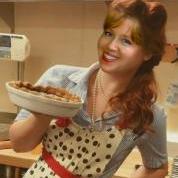-
Welcome to the eG Forums, a service of the eGullet Society for Culinary Arts & Letters. The Society is a 501(c)3 not-for-profit organization dedicated to the advancement of the culinary arts. These advertising-free forums are provided free of charge through donations from Society members. Anyone may read the forums, but to post you must create a free account.
Pate a Choux - The Topic - Ask Questions Here.
-
Similar Content
-
- 61 replies
- 36,181 views
-
- 15 replies
- 1,826 views
-
- 173 replies
- 29,744 views
-
- 5 replies
- 405 views
-
- 7 replies
- 523 views
-
-
Recently Browsing 0 members
- No registered users viewing this page.





Recommended Posts